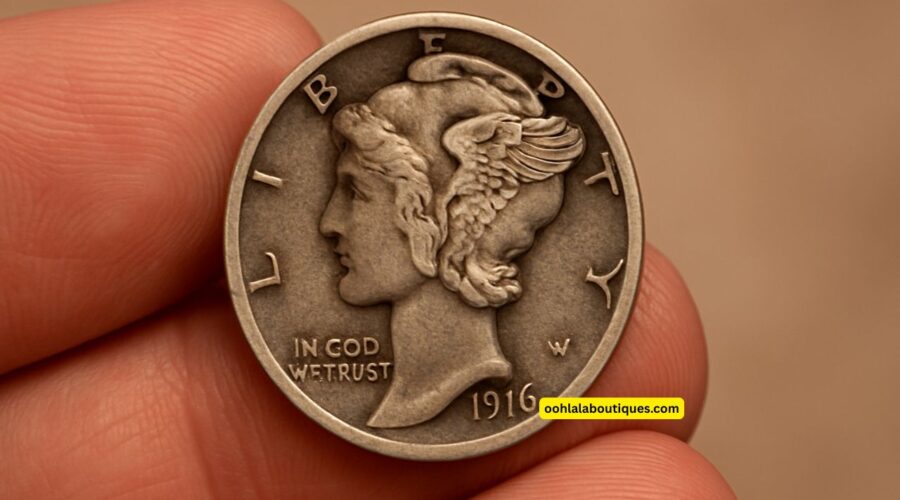Rare Mercury Dime Valued At $21.31 Million Could Still Be In Circulation
The Mercury dime, officially known as the Winged Liberty Head dime, was minted by the U.S. from 1916 to 1945.
Designed by Adolph A. Weinman, it features a young Liberty wearing a winged cap on the obverse and a fasces with an olive branch on the reverse — symbols of freedom and peace.
Though once everyday pocket change, some specimens are now numismatic treasures.
One extraordinary dime, believed to be a pristine 1916‑D or perhaps a never‑before‑authenticated mint error, is currently estimated to be worth a staggering $21.31 million.
Experts believe this jaw‑dropping valuation is based on its exceptional rarity, flawless condition, and potential historical significance.
What Makes a Mercury Dime So Valuable?
Several key factors contribute to the high valuations of these silver dimes:
- Scarcity — The 1916‑D proof was minted in limited quantities: only 264,000 originals, most later melted or circulated heavily.
- Condition — Uncirculated coins with “full bands” (well‑defined horizontal bands on the fasces) and intact rims can command multimillion‑dollar prices.
- Mint errors — Rare anomalies such as the 1942/41 overdate or undiscovered die flaws can elevate value exponentially, sometimes leading to valuations of $20 million or more.
Estimated Value by Year, Mint & Condition
| Year | Mint | Mintage | Condition | Estimated Value |
|---|---|---|---|---|
| 1916‑D | Denver | 264,000 | Uncirculated | $21.31 million |
| 1916 P | Philly | ~22 million | Good | $1,500 |
| 1916 S | San Fran | ~10.5 million | Very Fine | $3,000 |
| 1942/41* | Philadelphia | unknown | Uncirculated Error | Multi‑million (rare) |
| 1945 P | Philly | ~159 million | Fine | $200 |
| 1945 D | Denver | ~40 million | XF | $500 |
* 1942/41 overdate coins are prized error variants where the date reflects elements of both years under magnification.
Could One Still Be Circulating?
Yes — and that’s the buzz. The alleged $21.31 million Mercury dime has not appeared in any auction or grading registry.
Some coin‑collecting specialists believe a perfect specimen or rare error could be unknowingly passing through pockets and cash registers.
This notion has sparked a wave of renewed interest among hobbyists. From coin‑jar sorting to scouring vintage collections, enthusiasts are searching for that extraordinary find — the one dime that could redefine “the luck of the draw.”
How to Identify a Million‑Dollar Mercury Dime
- Check the Date and Mint Mark — Look for a 1916 with a tiny “D” beneath the olive branch; rarity increases substantially from this year.
- Inspect the Fasces Bands — Use magnification to ensure the horizontal bands are fully defined (a key trait of high‑grade coins).
- Magnify the Date for Errors — Hold it up to a loupe to see if a second date (e.g., the “1” from 1941 under a 1942) is visible. That’s an overdate error.
- Examine the Rims — Coins with sharp, complete rims are far more valuable than worn examples.
If in doubt, seek authentication from reputable services like PCGS or NGC — they can grade the coin and assess its monetary worth.
The story of a $21.31 million Mercury dime still circulating captures the imagination of collectors and casual coin‑finders alike. With just a few rare dates, pristine condition, or mint errors, an ordinary dime jar might hold life‑changing treasure.
While chances are slim, the next time you sift through your loose change, remember: history, art, and fortune could be hiding in plain sight.
FAQs
Is every Mercury dime worth a fortune?
No. Only a few key dates or error coins (e.g., 1916‑D in mint state, 1942/41 overdate) fetch multimillion‑dollar prices. Most circulated dimes are worth less than a few thousand dollars.
How can I verify if I own a rare Mercury dime?
First, check the date and mintmark under magnification. Next, look for well‑defined bands and complete rims. Submit any potential rarity to a professional grading firm for authentication.
Where would such a coin be sold?
Ultra‑rare Mercury dimes are typically sold in top-tier numismatic auctions (e.g., Heritage Auctions, Stack’s Bowers) or through major coin dealers following official certification.


Leave a Reply